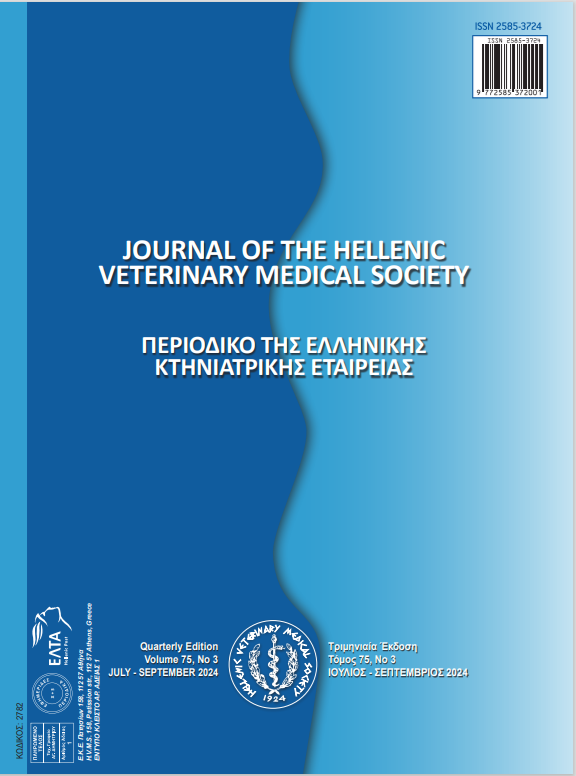The effect of high levels of Glycyrrhiza glabra powder on performance, carcass characteristics, blood parameters, immunity, intestinal microbial flora, intestinal morphology and breast muscle fatty acid profile in broilers
Resumen
In order to investigate the effect of licorice medicinal plant on performance, carcass characteristics, fatty acid profile of breast muscle, intestinal microbial flora, blood constitutes and immunity of broiler chickens, an experiment using a completely randomized design with 3 treatments, 4 replications, 10 chicks per repetition and a total of 120 pieces of one-day-old male broiler chickens of commercial strain Ross 308 were performed for 42 days. Experimental treatments included three different levels of licorice (0, 300 and 400 mg/kg feed). Data was analyzed using SAS statistical software and averages were compared at the 5% probability level with Duncan's multiple range test. The results showed that although variation in feed consumption, weight gain and feed conversion ratio was not significant in any of the rearing periods (P≥0.05), the highest feed consumption, weight gain and the best feed conversion ratio was observed in the final period of chickens were fed with Diet containing 400mg/kg licorice. Also, according to the data, the best European index was related to this treatment. In addition, the use of two levels of licorice had no significant effect on carcass characteristics or intestinal microbial flora; however, the highest increase in body weight and the lowest number of Lactobacillus acidophilus bacteria were observed at the higher level of licorice. However, these high levels did not lead to a decrease in abdominal fat. According to the results obtained, different levels of licorice led to a significant reduction of harmful fats such as cholesterol, triglycerides, VLDL and LDL (P<0.05). Furthermore, although the level of HDL was not significant (P≥ 0.05), its highest amount was seen at high levels of licorice. In addition, the lowest amount of total protein, albumin and globulin was observed at the level of 400 mg/kg of licorice. According to these results, although the amount of glucose was lowest its level was not significant (P≥0.05), Also, the use of this same level of licorice had no significant effect on the function of the humoral immune system in response to antigen injection (SRBC Antibody against sheep red blood cell) or antibody titer against Newcastle virus and influenza (P≥0.05). Nevertheless, according to the data, the highest antibody titer against Newcastle virus and SRBC antigen was associated with this treatment. These results also showed that high levels of licorice led to an increase in the number of Bifidobacterium. Villi width and crypt depth decreased at the high dose of licorice, but the ratio of villi length to crypt depth increased. In addition, the use of different levels of licorice could not reduce the ratio of saturated to unsaturated fatty acids compared to the control group. Therefore, based on the results of this research, it is recommended to use the level of 400 mg/kg of licorice to supplement the diet of broilers of Ross 308 strain.
Article Details
- Cómo citar
-
Shaban, E., Bouyeh, M., & Seidavi, A. (2024). The effect of high levels of Glycyrrhiza glabra powder on performance, carcass characteristics, blood parameters, immunity, intestinal microbial flora, intestinal morphology and breast muscle fatty acid profile in broilers. Journal of the Hellenic Veterinary Medical Society, 75(3), 7943–7956. https://doi.org/10.12681/jhvms.36094
- Número
- Vol. 75 Núm. 3 (2024)
- Sección
- Research Articles

Esta obra está bajo una licencia internacional Creative Commons Atribución-NoComercial 4.0.
Authors who publish with this journal agree to the following terms:
· Authors retain copyright and grant the journal right of first publication with the work simultaneously licensed under a Creative Commons Attribution Non-Commercial License that allows others to share the work with an acknowledgement of the work's authorship and initial publication in this journal.
· Authors are able to enter into separate, additional contractual arrangements for the non-exclusive distribution of the journal's published version of the work (e.g. post it to an institutional repository or publish it in a book), with an acknowledgement of its initial publication in this journal.
· Authors are permitted and encouraged to post their work online (preferably in institutional repositories or on their website) prior to and during the submission process, as it can lead to productive exchanges, as well as earlier and greater citation of published work.






